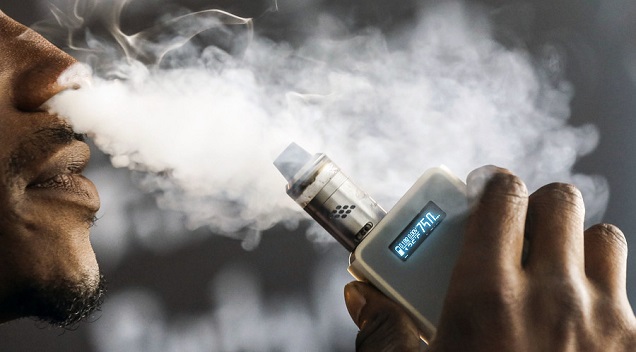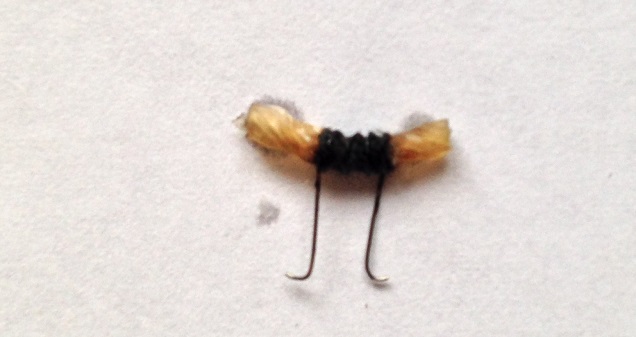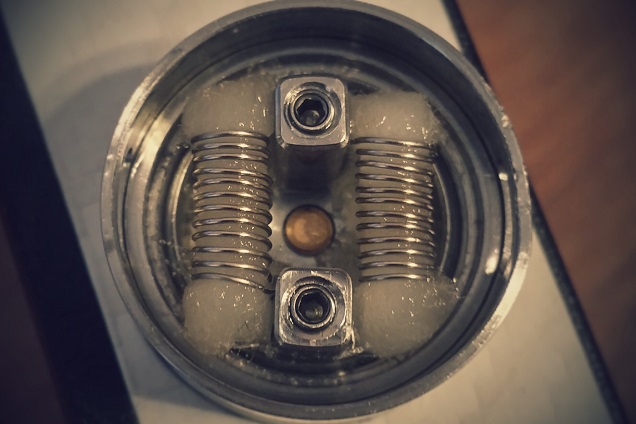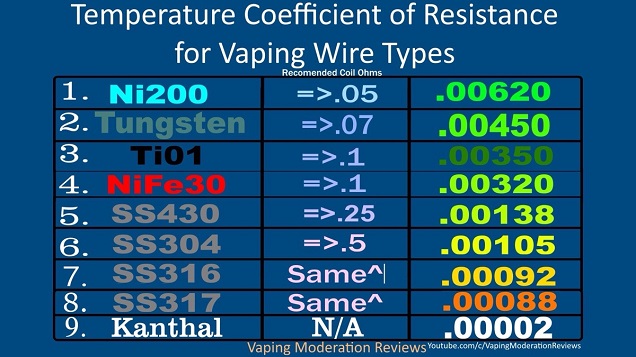
If you’ve been vaping for a while or have shopped around for mods at any point in the last couple of years, you’ll have undoubtedly come across temperature control vaping. It’s gone from being a niche addition to some higher-end devices to basically a must-have feature for many vapers. These days you’ll barely ever see a mod released which doesn’t feature it. But what is temperature control vaping? How does it work? Why would you want to use it? What coils can you use with it? Here’s everything you need to know about temperature control mods.
Key Takeaways
- Temperature control works by inferring changes in temperature from how your coil’s resistance changes when it gets hotter or colder.
- This allows you to avoid dry hits and get a more consistent performance out of your device.
- Wire materials like nickel, titanium and stainless steel work with TC mods. Kanthal and nichrome don’t change resistance enough with temperature to work.
- All you need to TC vape is a mod with the feature (almost any modern device will have it) and a tank or atomizer with a suitable coil type.
- The “TCR” – the temperature coefficient of resistance – tells you how much the coil's resistance changes with temperature.
- TC mods have pre-programmed TCR values so they work with common TC coil types (like nickel, titanium and 316 stainless steel). Some also allow you to adjust it directly.
- Some TC mods operate in joules. From a vaper’s perspective this is effectively identical to watts.
What is Temperature Control Vaping?

The basics of what temperature control (TC, for short) actually does are very easy to understand. In ordinary variable voltage / variable wattage (VV/VW) mods, you choose a wattage or a voltage setting and vape. The setting you choose dictates how much current is sent to your coil. We’ve covered this separately, but the only real difference between voltage and wattage from a vaper’s perspective is that the wattage takes account for the resistance of the coil.
However, regardless of the differences between voltage and wattage settings, they work in the same basic way. Each setting sends a certain amount of electricity through your coil for however long you’re pressing the button down. This heats up the coil and vaporizes your e-juice. If you keep pressing the fire button, the temperature will keep increasing, because you’re still sending the same amount of electricity to the coil. Eventually, if your coil starts to run low on juice, this will overcook what is there (cause a “dry puff”) and possibly burn your cotton. Both of these things taste really gross, so you don’t want that to happen.
TC vaping, as the name suggests, focuses on the temperature of the coil rather than the voltage or wattage you’re working at. So instead of telling your mod, “send 40 W to the coil for as long as I press the button” you’re telling it, “don’t let the coil get hotter than 430 °F.” For TC devices, they do ultimately work at a set wattage (and some let you choose your “ramp up” wattage), but their main aim is to limit the temperature at whatever value you set. When you reach that temperature, the mod then reduces or stops the power to maintain the temperature.
A decent analogy is thinking about your voltage or wattage as the accelerator pedal on your car and the temperature as the speed you get up to. With ordinary vaping, you’re pressing down the accelerator and raising the speed, but you have no speedometer so you can’t be sure how fast you’re going. And if you go too fast, you get in trouble from a cop who’s following you just waiting for you to break the speed limit. In terms of vaping, this represents hitting the dry puff zone. TC vaping allows you to set the maximum speed, and then you can accelerate as normal until you reach that speed. At this point, the car takes over and lets up on the acceleration. That way, you don’t get in trouble from the asshole cop that’s following you just waiting for you to break the law.
Why Would You Want to Use it?
The benefits of temperature control vaping should be clear. If you want to avoid horrible dry puffs (and the formaldehyde they bring with them), temperature control is the perfect solution. When there isn’t enough liquid in your coil or it’s going to get overcooked as a result of your setting, the temperature of the coil will quickly approach the limit you set and the mod will save you from the dry puff before it even happens.
This has quite a few consequences for vaping. Firstly, it means you can vape when your tank is low on juice without risking constant dry puffs. You don’t have to worry about getting dry puffs because you’re using a higher-VG e-juice on a device that isn’t well-equipped to deal with it. And if you’re chain-vaping too much, where you’d normally risk running into a dry puff, TC will ease of the power before that happens.

It also means that your coil lifespan will be improved with TC. This is because the maximum temperature protects your wick from getting burnt. This is one of the most common reasons coil heads get ruined. You can even completely “dry-fire” your coil (with no juice at all) and not have problems. As long as the setting is below 410 °F, the cotton won’t burn. There isn’t really a benefit of doing this (other than to test your TC accuracy), but it’s a clear demonstration of why your coils will last longer.
Finally, setting a temperature means you can get much more consistent performance with a TC device. For example, every juice has a “sweet spot” setting. This is a setting where the flavors really come through clearly without unpleasant dry puffs. Although vapers are accustomed to searching for the right wattage for this, the thing that really determines when it happens is the temperature.
Different flavorings are vaporized at different temperatures. Although you can find the wattage where it all works out nicely, what you’re really doing is finding the wattage that usually heats the juice up by just the right amount. That “usually” is key, because when the temperature varies, the performance does too. By focusing on the temperature, TC devices provide a consistency in flavor it’s simply not possible to get otherwise.
What Are the Downsides to Temperature Control Vaping?
Although most vapers like TC, for anybody unsure it’s worth pointing out that not everyone loves it. It’s excellent for consistency in performance and maximizing the harm reduction potential of vaping. On the other hand, as a post on Wake and Vape points out, vapor production will often be reduced a little bit on TC devices. If you're a cloud-chaser, this can be rectified by using higher-end coil types like Clapton coils. In general, though, the vapor production will be lower for TC vaping.

Another widely-cited downside is for rebuilders. It’s obviously possible to buy some wire suitable for TC and make your own coils in the way you ordinarily would. However, nickel in particular is difficult to work with. To build a coil in the workable resistance range for most mods, you need to use very thin wire. It’s softer than kanthal too. Both of these points mean that rebuilding is a delicate process. The wire can even break when you tighten down your post screws. On top of this, the additional challenge of keeping successive wraps consistently and evenly spaced out makes things worse. It’s definitely possible (many recommend using the threading in a suitably-sized bolt, and you can get tempered nickel to make it easier), but it’s something to keep in mind.
Finally, setting up your wicking is a bit different too. You’ll need to use substantially less cotton than you would with a kanthal coil to get a good result.
How Does Temperature Control Vaping Work?
So how does TC vaping actually work? And why isn’t it a set temperature instead of just a temperature limit?
The most sensible way to accomplish TC vaping would be to simply measure the temperature directly. However, as an E-Cigarette Direct post on the topic points out, this isn’t possible. The problem is that there simply isn’t room in the 510 connection for a temperature probe. There are positive and negative pins and that’s it. If you wanted to add one in, you’d have to completely redesign the connection. This would mean your mod wouldn’t work with most atomizers. (The Vaptio Ascension S150 actually accomplishes this with a 510 compatible connection, though)
The solution is pretty smart. When materials get hotter, their resistance (i.e. the number of ohms) increases. The difference is only small, but if you read the resistance precisely enough you can detect the change as the coil gets hotter.
For the mathematically inclined, a Spinfuel article goes through all the details, but the short version is this. For each material, the resistance increases by a set amount with each degree hotter it gets. As long as this increase in resistance is big enough to be detected, TC mods can use this to infer the temperature of your coil.
What is a TCR?
When you're learning about TC vaping, you'll come across the term “temperature coefficient of resistance,” or TCR. This tells you the size of the change in resistance for a given change in temperature for each material. So with these TCR values and the relationship between temperature and resistance, your mod works out how hot your coil is getting. The formula only tells you changes in temperature, though. To deal with this, mods assume room temperature when you first connect your atomizer and work the rest out from there. Many let you “lock” the resistance at room temperature manually so you get consistent performance.
Which Coils Can You Use for TC Vaping?
At this point you may be thinking, “Great, I’ll go get a TC mod to use with my ordinary kanthal coils and get to it!” But it’s not quite so simple. The problem is that the TCR for different materials varies, and the one for kanthal doesn’t work very well for this purpose. The problem is that it’s so low that the resistance barely changes at all. It stands up really well to being heated. This is great for keeping your coil a consistent resistance, but it does the job too well for TC mods.
The main coil materials that are used for TC vaping are Ni200 (nickel), titanium and stainless steel. These still have low TCRs, so your resistance won’t go crazy while you’re vaping. But crucially, they’re high enough that mods can detect the changes fairly easily. This means to try TC vaping, you’ll need a tank that supports one of these coil types. You can also build your own RDA coil using one of them. The TCR values for different wires can be found on Steam Engine’s wire wizard. This has been compiled into a table too:

Although it’s not included, nichrome wire has a TCR of about 0.0004 (or about 0.0001 according to Steam Engine). So while it’s slightly better than kanthal for TC purposes, it’s still way too much to ask from the technology. As for the value for kanthal, Steam Engine puts it at 0.000002 (ten times less), rather than 0.00002. Unfortunately, we’re not sure which is correct (let us know in the comments if you do!). But since it’s widely-known to be out of the range of most TC mods, we’re inclined to go with the Steam Engine value.
Many devices give you the option to manually set the TCR. This means you can adjust how the mod interprets changes in resistance and thereby have more precise control over your TC. This allows you to set up TC with different wire types. Alternatively, you can tailor how the TC works with supported wire types. This is especially useful with things like stainless steel, where there are many different grades available but they have different TCR values. TCR settings allows you to ensure your device is perfectly set up for your coil.
They should tell you, but the TCR settings on modern Joyetech devices, for example, are 100,000 × the actual TCR. This means that you move the decimal point five places over to the right to get the result from the table above. So Ni200, with a TCR of 0.00620 would have a setting around 620.
What Are Joules? How Do They Relate to Watts? A Quick Primer

As if TCR values didn’t make the TC complicated enough, there is another issue to deal with. Many mods use “joules” for their TC mode. So you may naturally be wondering: what are joules and how do I choose the right setting?
A joule is the unit for energy, but for vapers the situation is thankfully very simple. A watt is just a joule per second. So when you’re setting your wattage on your mod, you’re saying “send x joules per second to the coil for as long as I hold the fire button.” In other words, for the purposes of vaping, watts and joules serve exactly the same purpose. You should just use the same setting in joules as you would in watts.
Conclusion – TC is Simple (ish)
So to find out about TC and how it works we’ve had to get a little complex. However, from a vaper’s perspective, the key points are very simple. You get an eligible coil and a mod that supports TC, set the maximum temperature you want your coil to reach and then vape as normal. If you want to get a bit more technical, you can adjust your TCR on some devices. However, this really isn’t necessary and you can at least use tables already put together by vapers for this purpose. So the ins and outs of TC can get a bit heavy on the science and math, but the reality is that you don’t have to deal with that: you can just adjust some basic settings and get on with vaping.

